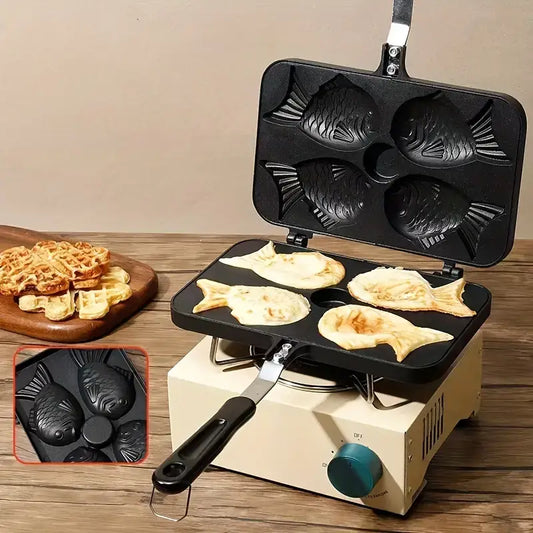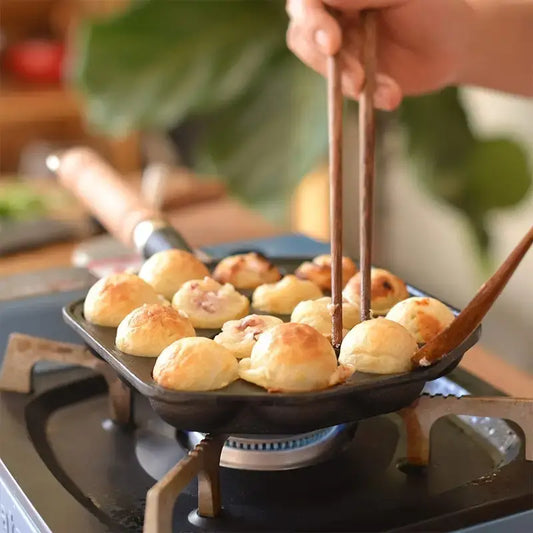Precision with Tradition: Japanese Pans Collection
Elevate your cooking game with our Japanese Pans Collection—a curated lineup of premium cookware that blends time-honored craftsmanship with modern culinary performance. Whether you're flipping tamagoyaki, searing yakisoba, or perfecting your gyoza crisp, these pans bring precision, balance, and beauty to every dish.
Designed for both pros and passionate home cooks, these pans offer unmatched durability, heat distribution, and iconic Japanese design, turning everyday meals into authentic kitchen experiences.
Crafted to Perform: Heritage Meets High Heat
Each pan is a work of utility art:
-
High-Quality Carbon Steel or Cast Iron: Even heating and unmatched longevity
-
Specialized Shapes: Square for tamagoyaki, deep-sided for stir-fry, flat griddle for okonomiyaki
-
Wooden or Resin Handles: Comfortable grip, traditional flair
-
Pre-Seasoned or Nonstick Coatings: Ready for any kitchen
| Pan Type | Material | Best For |
|---|---|---|
| Tamagoyaki Pan | Carbon steel | Japanese rolled omelets |
| Wok-Style Pan | Cast iron or stainless | Stir-fries, noodles |
| Flat Griddle | Iron or ceramic | Pancakes, savory pancakes |
| Yukihira Saucepan | Hammered aluminum | Soups, simmered dishes |
Why Japanese Pans Make a World of Difference
These pans don’t just cook—they inspire:
-
Engineered for Precision: Designed to deliver perfect technique
-
Cultural Authenticity: Honoring Japanese cooking traditions
-
Professional Quality: Long-lasting, restaurant-grade tools
-
Stovetop Versatility: Compatible with gas, electric, and induction ranges
| Feature | Benefit |
| Rapid Heat Response | Control your temperature instantly |
| Lightweight Options | Easy for home chefs to handle |
| Traditional Aesthetic | Brings elegance to your cookware collection |
| Eco-Conscious Materials | Built to last generations |
From Stove to Table: How to Use & Style Your Pan
Master your meals with the right tools:
1. Tamagoyaki Perfection
-
Grease lightly, layer egg mix, and roll with chopsticks
-
Serve as bento box centerpiece
2. Stir-Fry Showdown
-
Flash-cook veggies and meat with sesame oil
-
Pair with ceramic bowls and chopsticks
3. Okonomiyaki Night
-
Use flat griddle for crispy edges and perfect flips
-
Serve hot with drizzle sauce and katsuobushi
4. Home Ramen Vibes
-
Use Yukihira pan to simmer broth or boil noodles
-
Pour directly into anime-themed bowls
| Cooking Style | Recommended Pan | Meal Outcome |
| Bento Prep | Tamagoyaki pan | Compact & aesthetic portions |
| Family Stir Fry | Wok-style pan | Quick & balanced meals |
| Street Food Night | Griddle pan | Savory and crispy creations |
| Soulful Soup | Yukihira saucepan | Deep, warm flavor base |
Cookware Companions: Build Your Kitchen Set
Complete the vibe with:
-
Wooden Lids & Ladles: Traditional tools for authentic cooking
-
Anime-Themed Bowls: Serve with character and charm
-
Japanese Cutlery & Chopsticks: Prep and present with pride
-
Aprons & Towels: Match your setup in style
| Add-On | Kitchen Advantage |
| Bento Mold Kit | Perfect tamagoyaki sides |
| Cast Iron Trivet | Protects your table in style |
| Japanese Spatula | Precision flipping & mixing |
| Steam Basket Insert | Boosts versatility |
Craft with Heat, Cook with Heart
Japanese Pans turn meals into moments—from the hiss of first contact to the final plated perfection. They're not just cookware; they’re instruments of culinary joy, built for beauty and function.
So grab your chopsticks, heat up the stove, and get cooking.
Because with the right pan, every dish is a masterpiece.

















